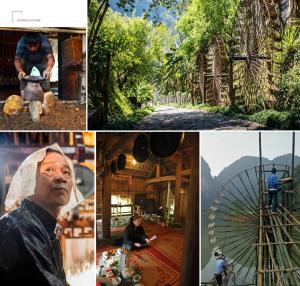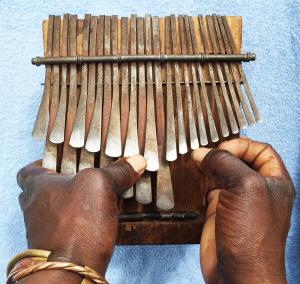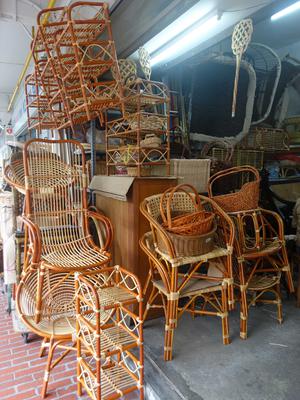The graphic art of the Wayana and Aparai, indigenous peoples of northern Pará, is a traditional cultural expression marked by great material, symbolic and conceptual diversity. Their graphics, created according to their own concepts, reflect a dynamic system of knowledge transmitted orally and through daily practices. As a collective heritage, governed by specific social and political norms, this art presents historical continuity and constant recreation, adapting to cultural transformations through creative processes of updating and resignification, which guarantees its contemporaneity and identity relevance.
Like all cultural elements, the graphic art of the Wayana and Aparai is subject to internal and external influences, which alter its formal and conceptual aspects. These changes are also reflected in social practices that can currently affect the contexts of production and, above all, the transmission of this art to the younger generation. On the other hand, it is worth noting that the graphic systems of indigenous peoples increasingly occupy a prominent place in political action and in the identity discourse that underpins it. This discourse is continually constructed and revisited, adapting to the contexts in which it operates, and acting as a mediator in a framework of multiple exchanges with national society.
It is important to note that the graphic art of the Wayana and Aparai should be understood as a system, since it represents a set of differentiated knowledge that is complex and complementary and that reveals its own dynamism. Such knowledge is related to mythical narratives, artistic expression, knowledge about biodiversity, production techniques for the manufacture of material objects and the production of graphics. These are revealed visually through their application to the bodies of men and women, as well as to objects and architectural elements. As mentioned, they constitute manifestations and expressions that integrate the cultural universe of these indigenous peoples.
The value of this cultural asset is not intrinsic, but rather attributed by particular individuals – the Wayana and the Aparai – based on certain historically conditioned criteria and interests. The dossier seeks, above all, to promote the recognition that these indigenous peoples have particular graphic/artistic expressions that are complex and that reveal their own dynamism. In this way, the text seeks an approach that results in benefits for the holders, in the preservation of the asset in question. This objective ultimately aims to “value the cultural identity of ethnic and social groups and of the people of these groups, as individuals who permanently create and recreate their history and culture”, as highlighted by Brayner (2009, p. 348).
It should be emphasized that the cultural heritage of an indigenous people includes the manifestations of expression – material and immaterial – that are part of their cultural universe and are therefore specific to that people, or, as is the case with the Wayana and the Aparai, of two peoples who have long shared the same territory and who have established strong family and social ties that have led to intense and frequent exchanges. Furthermore, indigenous cultural heritage must be understood, on a national level, in the same context as the great sociocultural diversity that exists in Brazil. Therefore, these heritages cannot be considered in a comprehensive and homogeneous way, but rather in their individuality and specificity.
The asset to be registered – the graphic art of the Wayana and Aparai – is multidimensional and it is illusory to seek to understand it through a single understanding of its characteristics, since they are multiple and differentiated. Its conceptual delimitation occurs in terms of the available elements, as it is not supported by surveys carried out within the framework of the INRC, since this type of survey was not carried out.
05-02-2025
| Institutional and human capacities | Iepé has a multidisciplinary team made up of different professionals: anthropologists, historians, biologists, agronomists and administrators. We highlight the team of anthropologists with a long history of anthropological research and indigenous relations with the indigenous peoples with whom Iepé works, having carried out different types of work. These anthropologists hold doctorates in anthropology, most of them from the University of São Paulo, where they were professors or students, when they developed their academic research on different themes of the material and immaterial heritage of the indigenous peoples living in Amapá and northern Pará. They are authors of several books and academic articles and organizers of several ethnographic exhibitions in various parts of Brazil and abroad to promote the material and immaterial culture of these peoples. This team of anthropologists coordinates indigenous training programs, teaches courses, supervises research, and prepares promotional materials. It coordinates collaborative research on aspects of the indigenous way of life and associated knowledge of these peoples. It also led the implementation of the Plan to Safeguard the Graphic Art of the Wajãpi People (IPHAN and UNESCO) and the preparation of a dossier for the registration of the graphic art of the Wayana people as an intangible asset in Brazil. In addition, Iepé supports the execution of the ongoing project with IPHAN, entitled “ Anumhak Omi Ïtop, Jamihme omi ritopo: Strengthening our Language ” aims to preserve, revitalize, and document the Wayana and Aparai indigenous languages in the Tumucumaque Park and Rio Paru d'Este Indigenous Lands. The project follows the guidelines of the National Inventory of Linguistic Diversity (INDL) and aims to promote the intergenerational transmission of knowledge, the production of educational and supplementary materials, the recording of rare linguistic repertoires and the creation of written and audiovisual content. With the active participation of indigenous researchers, the project includes training workshops, cultural events and institutional partnerships, strengthening the links between tradition, youth and the recognition of intangible linguistic heritage. | |
| Transmission and education | The graphic art of the Wayana and Aparai is a fundamental cultural expression that reflects not only a sophisticated aesthetic repertoire, but also a knowledge system deeply rooted in the social and spiritual life of these peoples. Despite its richness and potential, this expression faces significant challenges related to the transmission of traditional knowledge. External pressures, such as formal schooling, the increasing insertion of the city into the daily lives of villages, and the valorization of industrialized goods, have contributed to disruptions in intergenerational learning. At the same time, there is a reconfiguration of the values attributed to graphic art, with emphasis on its insertion into the market through the commercialization of artifacts, which, paradoxically, can help in its preservation. The learning process among the Wayana and Aparai is built on daily practice, mediated by observation, repetition and the continuous exercise of manual creation. Knowledge resides in the eyes and hands, in a dynamic where vision guides execution and gesture ensures the memory of knowledge. The production of artifacts — such as woven baskets and ceramic vessels — requires technical mastery and respect for traditional rules, in addition to a long process of collecting and preparing the raw material. However, artisanal production has been changing, with the replacement of traditional objects by industrialized ones and the lack of interest on the part of some young people, factors that put the continuity of complex and specific knowledge at risk. Therefore, this art is also subject to external pressures that affect its continuity, such as the introduction of urban values, changes in lifestyles, standardized schooling, and migration to urban centers such as Macapá. These transformations cause disruptions in the intergenerational transmission of knowledge, in the availability of raw materials, and in the dynamics of artisanal production, opening space for new forms of learning through the transmission of knowledge. New possibilities arise with the appreciation of indigenous art in commercial and institutional contexts. Commercialization, although it brings challenges, also strengthens the recognition and visibility of this practice within and outside the territories, especially when conducted by indigenous associations themselves that articulate production, sales, and sustainable natural resource management projects. | |
| Inventorying and research | The graphic art of the Wayana and Aparai is a unique cultural expression that reflects not only the aesthetics and technical knowledge of these peoples, but also their cosmological conceptions and ways of living. Its importance goes beyond the aesthetic domain, being directly linked to the formation of individuals, their collective identity and their mode of social organization. In this context, public policies, such as PNGATI and registration with IPHAN, play a crucial role in this process, by promoting environmental conservation, cultural appreciation and formal recognition of traditional ways of doing things. Thus, the graphic art of the Wayana and Aparai asserts itself as a living, collective and dynamic heritage, the preservation of which requires the strengthening of intercultural policies, respect for indigenous autonomy and support for the continuity of ancestral knowledge. The preservation of graphic art is directly linked to the appreciation of indigenous identities and the creation of strategies that strengthen the transmission of knowledge. This includes actions such as cultural workshops, audiovisual recordings and teaching materials, as well as institutional partnerships to ensure recognition and support. The registration of graphic art as intangible cultural heritage represents an opportunity for the Wayana and Aparai to define paths for their future, consolidating the importance of their cultural practices in contemporary times and ensuring means of protection and revitalization that dialogue with their own ways of living, learning and creating. All of these processes are supported by Iepé in constant collaboration with indigenous associations and communities. Since 2010, Iepé has promoted several initiatives that aim to strengthen the traditional knowledge of the Wayana and Aparai, including cultural exchanges, workshops and meetings aimed at valuing their practices and knowledge. In 2010, an important exchange took place between the Wayana, Aparai and Baniwa, which enabled the exchange of experiences on the management of arumã, a plant essential in the production of woven artifacts. In 2012, leaders of the two peoples met to discuss strategies for strengthening the cultural and political aspects of their communities. In 2015, a workshop aimed at Wayana and Aparai women promoted the recovery and appreciation of the art of pottery, with a focus on traditional ceramic production. In 2016, a specific meeting was held to register the graphic system of these peoples, continuing the process of recognizing and safeguarding their graphic art as intangible cultural heritage. Since 2016, Iepé has promoted meetings between chiefs to exchange cultural knowledge and strengthen their governance, and since 2020, it has promoted annual meetings between Wayane and Aparai women for the same purpose. | |
| Policies as well as legal and administrative measures | In Brazil, Presidential Decree No. 3,551 of 2000 established the Registry of Cultural Assets of an Intangible Nature. This decree aims to preserve, recognize and value Brazil's intangible cultural heritage, which includes practices, representations, expressions and knowledge transmitted from generation to generation. The actions developed by Iepé to value the intangible cultural heritage of indigenous peoples are guided by the provisions of this decree, as well as by the UNESCO Convention for the Safeguarding of the Intangible Heritage of 2003. Our work aims to promote the recognition of indigenous peoples as holders of particular cultural expressions, permanently recreated, and takes into account the profound transformations that have been affecting the contexts of production and transmission of traditional knowledge today. And we understand that this concept is fully in line with national legislation and international understanding of intangible heritage. The multidisciplinary team at the Iepé Institute has been carrying out educational activities with different indigenous peoples, using different approaches, methodologies and themes of cultural heritage, aiming to train indigenous researchers who can take on, in the medium and long term, the processes of production, recording, selection and dissemination of the oral and artistic heritage of their groups. We know that, for some peoples, the interest is to rescue knowledge and methods of transmission that are no longer used, while for others the priority is to learn new ways of recording and disseminating this knowledge. By increasing awareness of the richness of their traditional practices, we believe that the indigenous youth and adults who participate in our activities prepare themselves to manage their cultural heritage according to the different approaches and interests of their own communities. The preparation of the Dossier on Wayana and Aparai graphic art aims to register it with the National Institute of Historical and Artistic Heritage - IPHAN, as an asset of an intangible cultural nature. | |
| Role of intangible cultural heritage and its safeguarding in society | The Iepé Institute has sought to contribute to the development of national public policies that promote the recognition of indigenous material and immaterial cultural heritage, the understanding of its relevance and the importance of supporting the protagonism of indigenous peoples in the management of their assets. In addition to producing numerous specialized publications on the subject, anthropologists linked to the Iepé Institute have participated in academic events in Brazil and abroad addressing aspects of the cultural heritage of the indigenous peoples with whom we work. Similarly, and concerned with the dissemination of this heritage, anthropologists from Iepé have been at the forefront of the main ethnographic and indigenous art exhibitions held in Brazil and abroad in recent years. In the specific case of Wayana and Aparai graphic art, the general objective of the safeguard plan is to contribute to the processes of cultural preservation and appreciation involving the components of graphic art, stimulating and strengthening the autonomy of these peoples in these processes. The specific objectives of the Safeguard Plan are as follows: - Support and encourage research to be developed by indigenous researchers with the aim of strengthening and ensuring the continuity and creativity of graphic art, taking into account its cultural, social and aesthetic characteristics and functions; - Strengthen mechanisms for transmitting theoretical and practical knowledge and skills, and their full appreciation as a source of knowledge; - Support the implementation of training workshops in the areas of documentation and research, as well as others, to be defined by the Wayana and Aparai; - Provide legal support for the recognition of the intellectual rights of the Wayana and Aparai indigenous peoples, especially with regard to the repertoire of graphics; - Promote coordination with the competent bodies at the federal and state levels of Amapá and Pará with the aim of supporting and valuing, culturally and economically, different forms of selling handicrafts; - Support the publication of a catalog of graphic patterns and other publications of interest to the Wayana and Aparai. | |
| Awareness raising | As bearers of their own cultural traditions and worldviews, indigenous peoples in Brazil have cultural rights recognized by the Constitution, including the right to a differentiated school education that values their languages and cultures. Iepé has worked to train indigenous teachers, provide consultancy on the development and implementation of differentiated school curricula for village schools, and produce teaching materials in Portuguese and indigenous languages that value indigenous knowledge, wisdom, and practices. Iepé also works to promote the recognition and appreciation of indigenous languages and cultural heritage, both by the communities themselves and by the surrounding society, which is unfamiliar with the concepts and practices of knowledge, transmission, and forms of cultural expression of indigenous peoples. Iepé believes that promoting in-depth reflections by indigenous communities on their own traditions is the first step towards cultural appreciation programs that foster the establishment of new bonds between generations. In this sense, it works to train indigenous researchers to manage their cultural heritage, which involves recording and disseminating aspects of their traditional knowledge, both internally and externally, as well as the use of new technologies (written and audiovisual) by indigenous youth. Promoting the appropriation by indigenous groups of new spaces in which they can conduct research, systematization, records, documentation and dissemination of cultural knowledge and practices is also one of Iepé’s priorities. Through translation workshops, workshops on various craft practices, ethno-mapping workshops and audiovisual workshops, we create community spaces for reflection that involve different community segments and generations, which allow reflection on different forms of transmission of knowledge and practices, valuing categories specific to indigenous thought. Iepé believes in the importance of internally valuing cultural knowledge and practices as a condition for selecting cultural aspects that we want to communicate to the external public. | |
| Engagement of communities, groups and individuals as well as other stakeholders | Another important form of action in national cooperation has been the qualified participation of members of the Iepé Institute in government committees and commissions in the areas of culture, education and the environment. Iepé is dedicated to monitoring indigenous and environmental public policies that affect indigenous peoples and their territories, working to positively influence them so that indigenous rights are respected. Participating in government councils and boards, as representatives of organized civil society, is a strategy adopted to contribute to the improvement of public policies. In the case of Wayana and Apalai Graphic Art, the proposal for registration with the IPHAN of the Ministry of Culture was made in partnership with the Association of Wayana and Aparai Indigenous Peoples (APIWA) and the Articulation of Wayana and Aparai Women (AMIWA). This partnership was and is fundamental for the development of the Safeguarding Plan for this art, and other associations and organizations were included, such as FUNAI, the Iepé Institute and the Museu Paraense Emílio Goeldi. In order to coordinate priority and essential actions to establish participatory management of the Wayana and Aparai in the safeguarding process, it will be important to coordinate with representatives of indigenous associations, as well as other community segments, such as indigenous teachers, indigenous researchers, young people, women, etc. | |
| International engagement | At the international level, the Iepé Institute has worked with networks, inter-institutional partnerships, collectives and collaborative partnerships to defend socio-environmental rights and preserve the Amazon. Expanding our international advocacy capacity, Iepé has been an organization with Special Consultative Status with the United Nations Economic and Social Council (ECOSOC) since 2021; since 2022, an observer organization accredited to the United Nations Framework Convention on Climate Change (UNFCCC) and, since 2024, an organization accredited to the Convention on Biological Diversity (CBD). And, since 2024, the Iepé Institute has been one of the civil society organizations accredited to exercise consultative functions with the UNESCO Convention for the Safeguarding of the Intangible Cultural Heritage. Also in 2024, Iepé organized a visit by APIWA to the Geneva Museum in Switzerland, giving four indigenous people the opportunity to access pieces of art produced by their ancestors that are part of the museum's collection. During the visit, they discussed the territoriality of the Wayana and Aparai peoples, addressing topics such as culture, social organization, and respect for the rights of these communities. | |
| References | 1- VAN VELTHEM, Lucia H.; LINKE, Iori Leonel. Imilikut/imenuru Registration Dossier : Arte Gráfica Wayana e Aparai, 2024 (in press). 2- VAN VELTHEM, Lucia H.; LINKE, Iori Leonel. The Book of Clay. New York: Routledge, 2017. 3- VAN VELTHEM, Lucia Hussak et al. The Book of Arumã: Wama Pampila: Aruma Papeh. New York: Lepé, 2014. 4- VAN VELTHEM, Lucia H. van; LINKE, Iori Leonel. Book of Wayana and Aparai graphic art. Rio de Janeiro: Museum of the Indian-FUNAI/Iepé, 2010. |
|

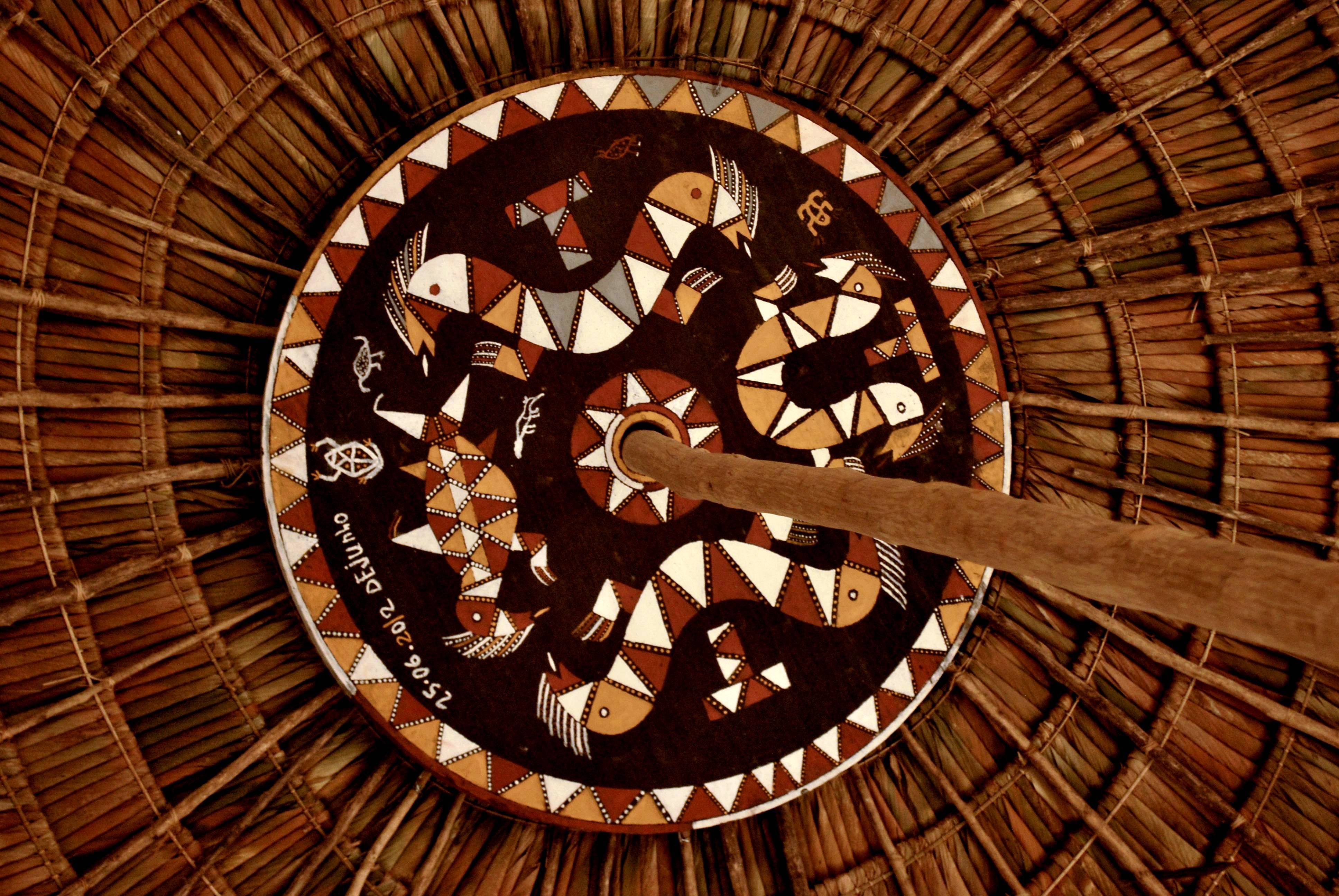
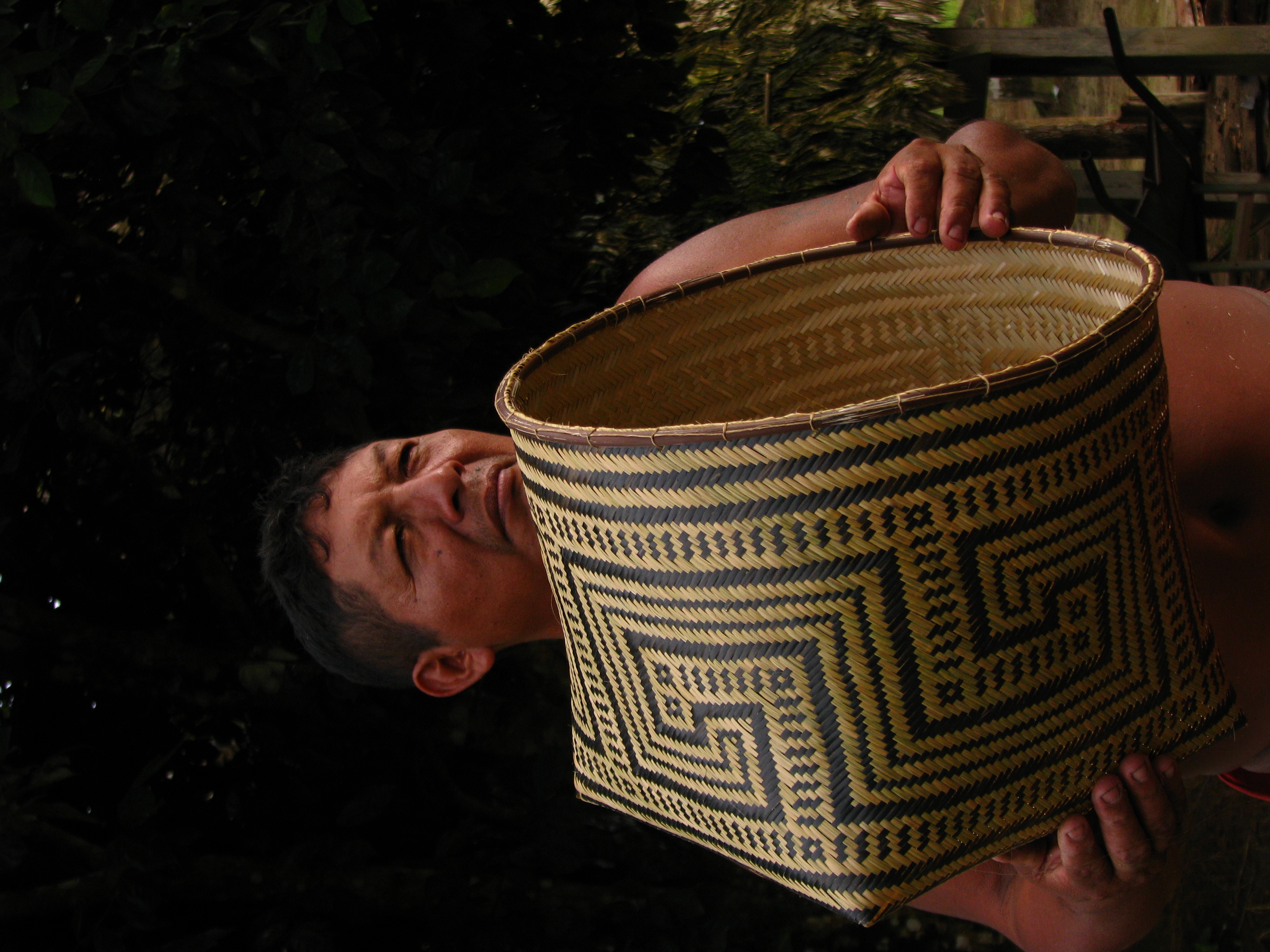
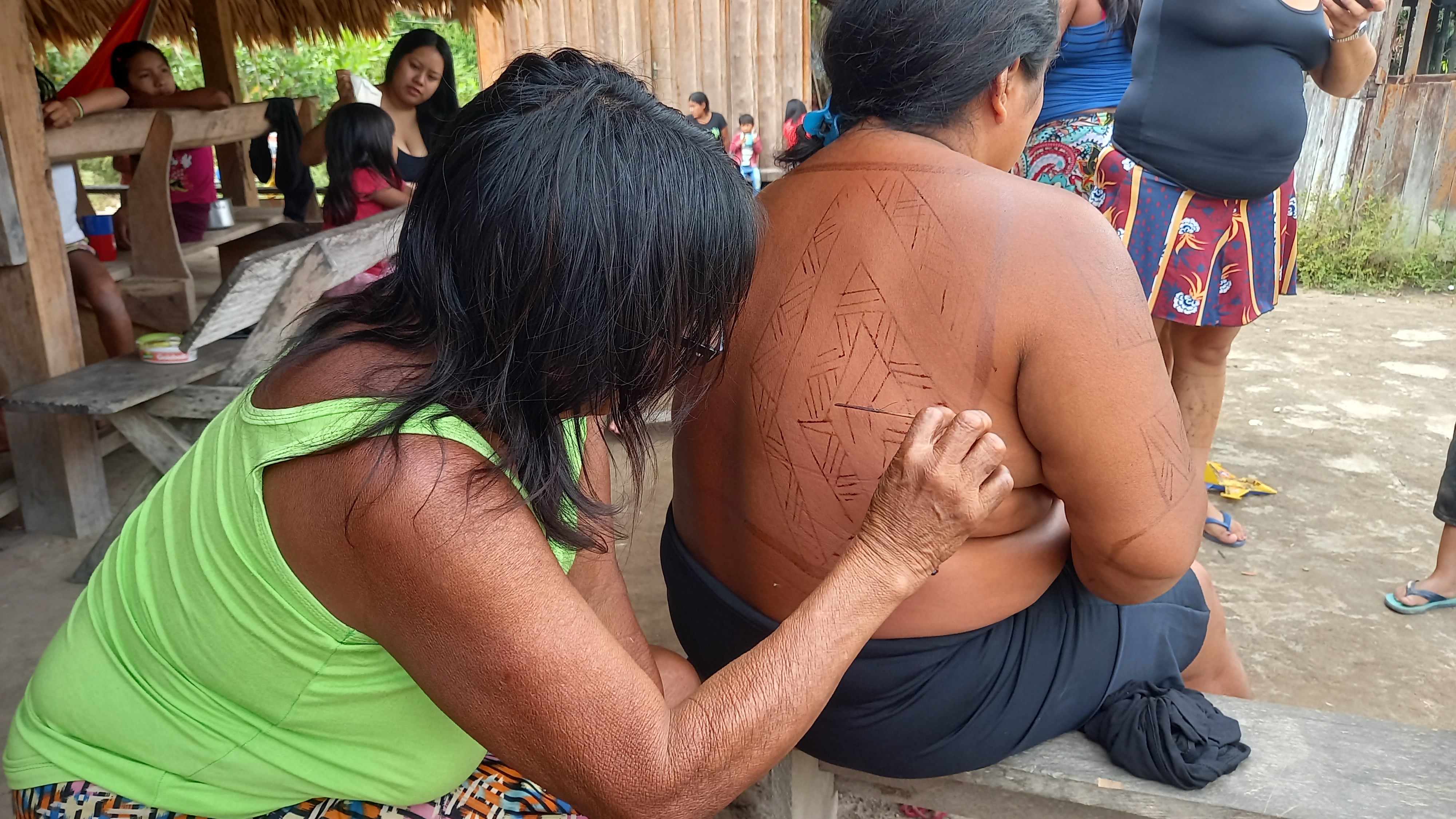
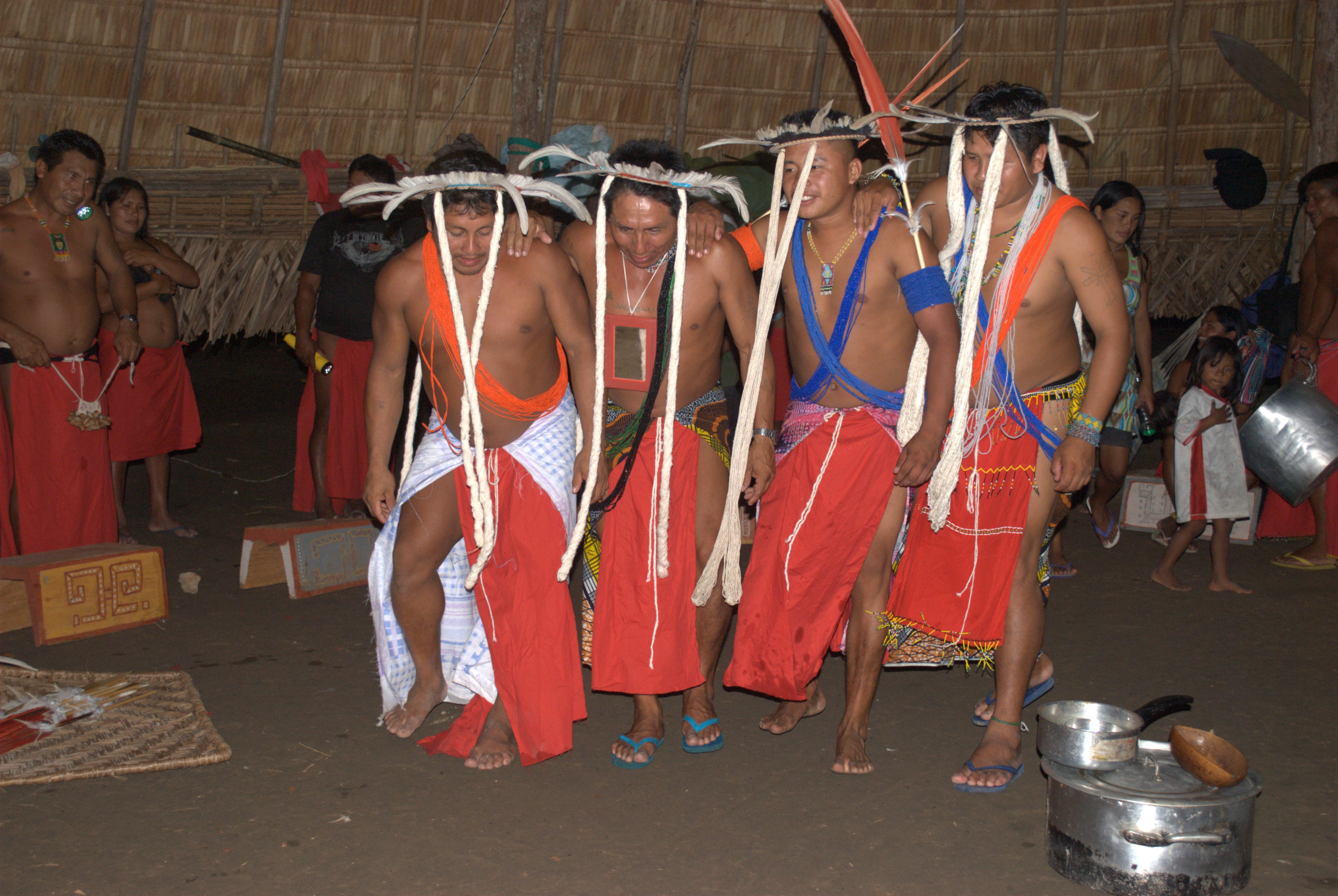
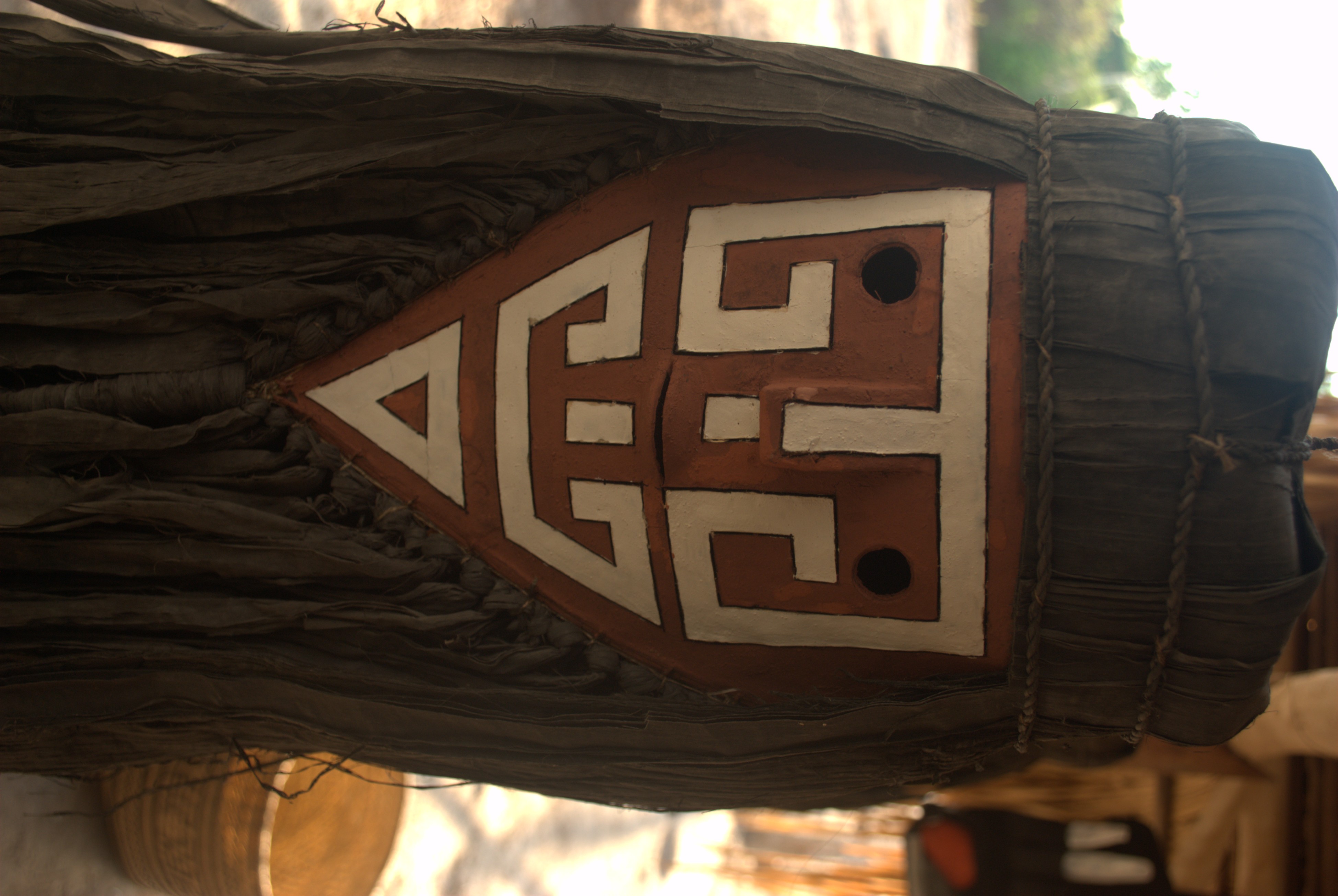

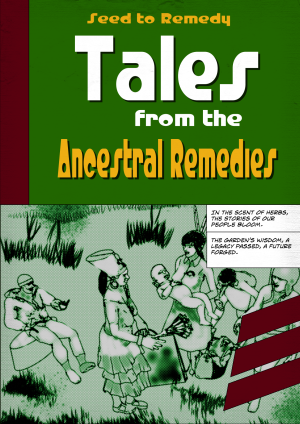
.jpeg)
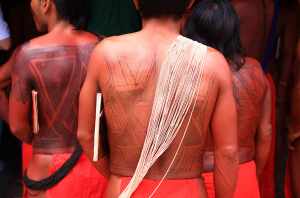
.jpg)
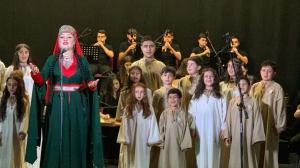
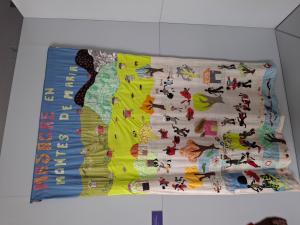

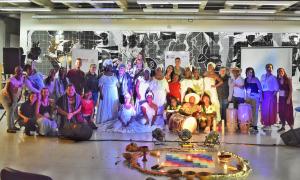
.png)
.jpg)















_(31711258567).jpg)

















